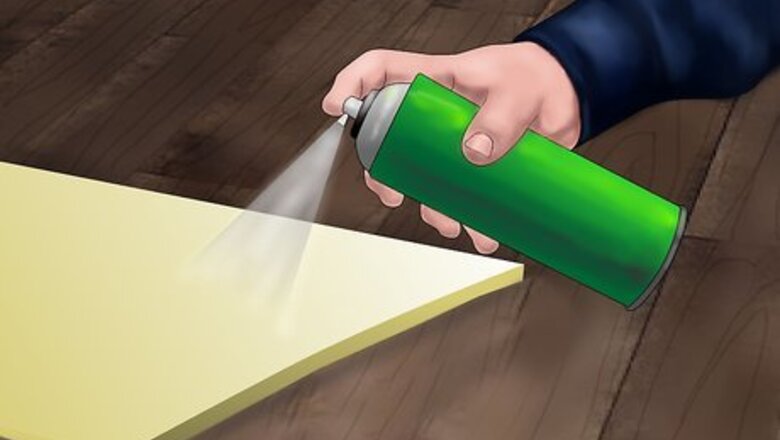
views
Make the Ends
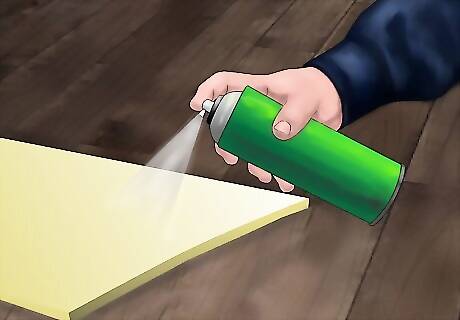
Adhere same-size pieces of foam together. Spray one side of each 9-by-27 inch (23-by-68 cm) and 11-by-19 inch (28-by-48 cm) piece of foam. Place the adhesive side of one piece of foam onto the adhesive side of a same-size piece. Repeat for the other six pieces. At the end of this step, you should have two pieces of double layered 9-inch (23-cm) foam and two pieces of double layered 11-inch foam (28-cm). These pieces of foam will form the hand guards. The smaller pieces will be used for the inner guards and the larger pieces will be used for the outer guards. Set these pieces aside for later. Make sure that the adhesive is dry before using these pieces again.
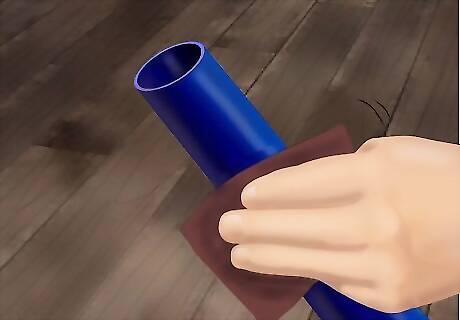
Sand down the ends of the pipe. Use sandpaper to rough up 8 inches (20 cm) from both ends of the PVC pipe. Roughing up the PVC pipe will help the adhesive spray and duct tape stick to it more effectively. You should also sand along the edges of the pipe end. The idea is to round it off. Do not sharpen the edges to a point, though. After sanding the PVC pipe, you should wipe away any shavings or dust with a damp rag.
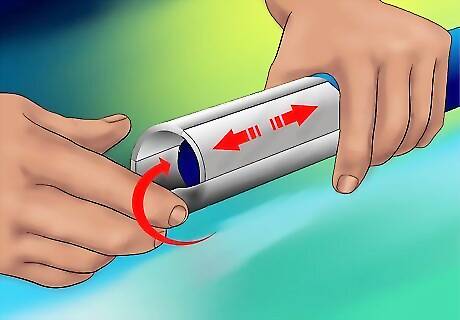
Tape off the end of the pipe. Apply several piece of duct tape over each open end of the PVC pipe. Use enough duct tape to thoroughly cover the entire rough edge of each end. Remove about 2 feet (0.6 m) (61 cm) of the tape. Stick 1 foot (0.30 m) (30 cm) down along the end of the pipe, then fold the other 1 foot (0.30 m) (30 cm) over the top and down the other side. Fold the overhanging tape over onto the pipe. This effectively "caps" the edge. Double up the tape, if desired, to make things even safer. This process makes the pipe a little less dangerous if it happens to come loose while the pugil stick is in use. With this sharp edge being capped, a person is less likely to be cut or injured by the end of the pipe.
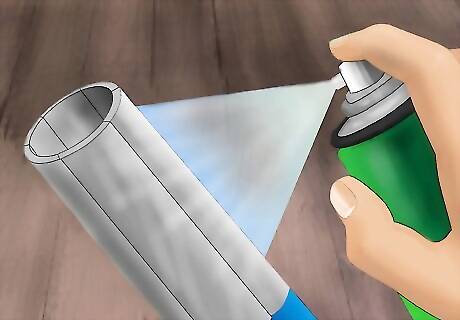
Apply adhesive to the end of the pipe. Coat 8 inches (20 cm) of each pipe end with adhesive spray. Note that it might be easiest to work with one end at a time from this point on. If you attempt to work with both ends at the same time, the adhesive might dry before you have a chance to work with it.
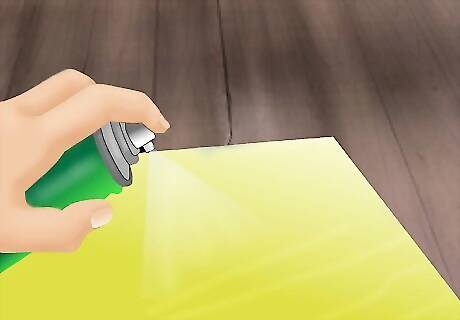
Apply adhesive to each 54-inch (137-cm) foam pad. Coat one side of each 11-by-54 inch (28-by-137 cm) foam pad with spray adhesive.
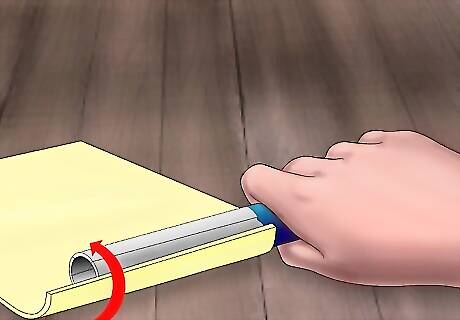
Wrap the foam around each end of the pipe. Stick the 11-inch (28-cm) side of one foam pad to one of the pipe ends. Wrap the rest of the foam around the pipe, rolling it into a neat cylinder. There should be 3 inches (7.6 cm) of foam hanging off the end of the pipe.
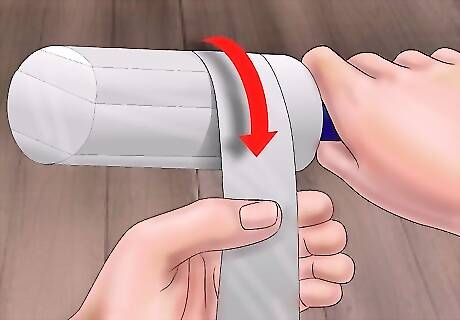
Cover the foam tube with tape. Wrap duct tape around the foam tube, covering the foam completely and further reinforcing its bond to the PVC pipe. Apply the tape along the length of the cylinder, not around the circumference. Make sure that the duct tape overhangs the pipe-end of the foam cylinder by about 5 inches (). Stick this overhanging duct tape to the bottom of the cylinder and onto the pipe. Repeat this process until the entire cylinder is covered, overlapping the proceeding piece of tape with each new piece of tape you apply. Seal the exposed ends of your tape strips by wrapping additional pieces of tape around the circumference of the cylinder.
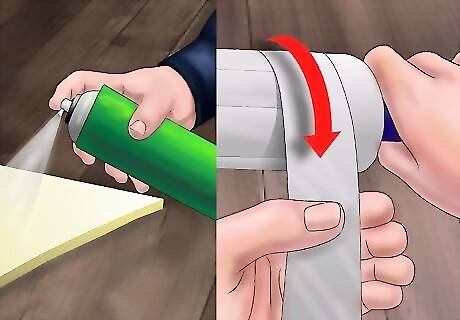
Create a second end cap. Use the same procedure to create a second end cap. Apply spray adhesive to the last 8 inches (20 cm) of the opposite pipe end. Apply adhesive to the other foam pad. Roll the short end of the pad around the bare end of the pipe, leaving 3 inches (7.6 cm) of foam hanging off the end of the pipe. Wrap this foam cylinder thoroughly with duct tape.
Build the Center Guard
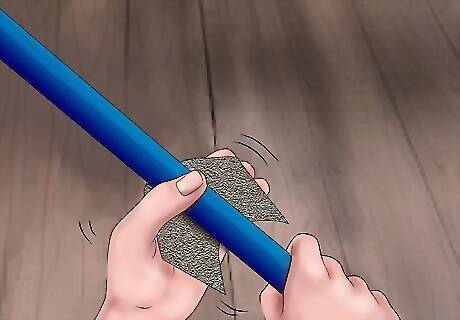
Rough up the pipe with sandpaper. Use the sandpaper to rough up the rest of the exposed PVC pipe. As before, roughing up the pipe makes it easier for the duct tape and adhesive spray to stick to it.
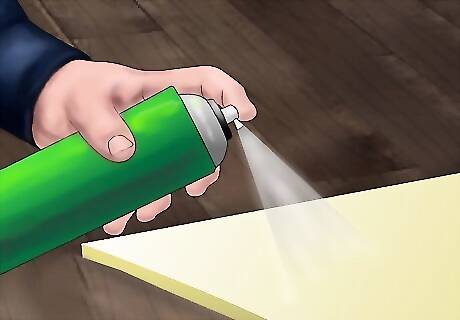
Apply adhesive to the final foam pad. Spray one side of the 7-by-13 inch (18-by-33 cm) foam pad with multipurpose adhesive. This piece of foam will become the center guard of the pugil stick.
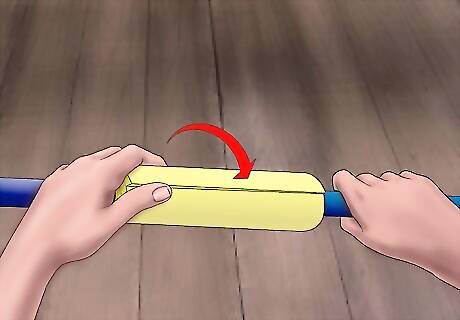
Wrap the pad around the center of the pipe. Align the center of the 13-inch (33-cm) side with the center of the PVC pipe. Stick the pad in place, then roll it around itself, wrapping up the center of the pipe.
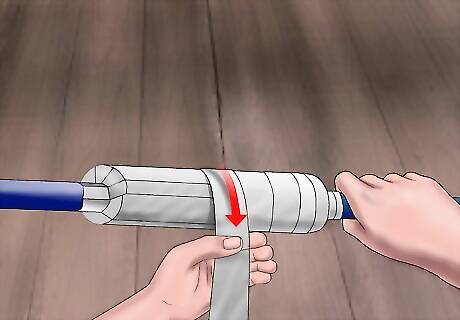
Secure the pad in place with tape. Wrap duct tape around the center guard padding, covering it completely. As with the end caps, you should apply the tape around the center guard lengthwise and not around the circumference. Leave 5 inches (13 cm) of overhang off each end. Flatten the overhang to the sides of the guard, then onto the pipe. Cover the entire center guard with tape. Each new piece of tape should slightly overlap the piece that came before it.
Finish the Pugil Stick
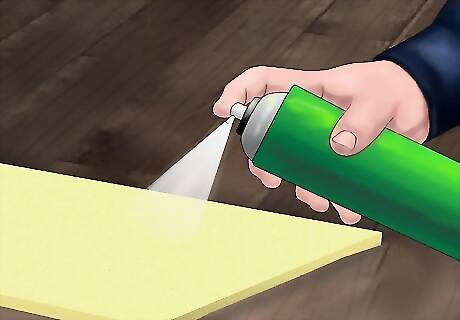
Spray the hand guards with adhesive. Return to your four double-layer hand guard pieces. Spray one side of each piece with adhesive spray, covering it completely. As before, it might be best to work with one piece at a time. Spray and wrap one hand guard, then spray and wrap the next. If you spray each one at the same time, the adhesive may not work as effectively by the time you work with the last one.
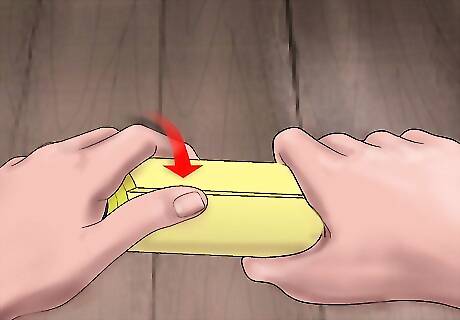
Fold the inner hand guards around the pipe. Take one portion of double layer 9-by-27 inch (23-by-68 cm) padding and center it around the pugil stick, positioning it just to the inside of the end cap. Fold the foam in half over the stick. The long edge should be the edge that you stick to the pipe. Repeat this step with the other inner hand guard foam and the other end of the pipe.
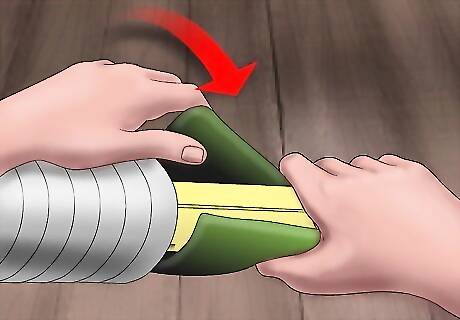
Place the outer hand guards over the inner hand guards. Position one piece of double layer 11-by-19 inch (28-by-48 cm) padding over the inner hand guard foam. Fold this piece of foam in half, sandwiching the pipe and inner guard inside. The long edge of this foam should be the edge stuck to the pipe. Position it so that it lies flush against the end cap. Repeat this step with the other outer hand guard foam and the other end of the pipe.
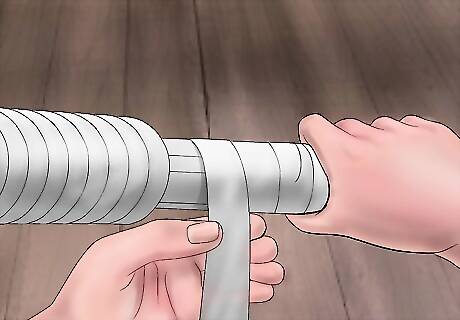
Cover the guards with tape. Wrap duct tape over the hand guards, covering them completely. As before, you should make sure that the tape completely covers the padding while also adhering it to the PVC pipe. Partially overlap each piece of tape with the piece that follows it.
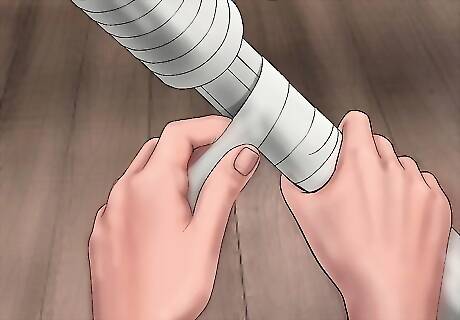
Wrap the rest of the pipe with additional tape. Wrap the rest of the PVC pipe with duct tape, completely covering the entire thing. Cover all exposed pipe, as well as all visible tape ends left behind from previous wrappings. The tape should overlap itself with each roll, and it should not be too even or smooth. Leave wrinkles and bumps in it. A smooth layer will be too slippery, but a wrinkled layer of tape will be easier to grasp.
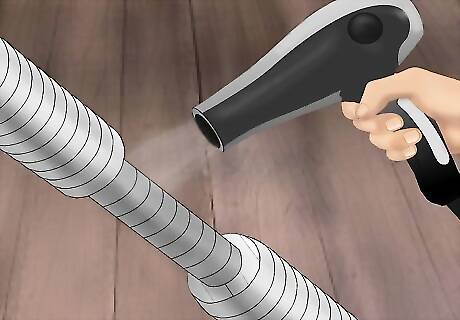
Heat the duct tape with a heat gun. Use a heat gun to warm up the tape on the pugil stick. After heating the tape, allow it to cool to room temperature. After heating the duct tape, press down on it with your hands to fix it more firmly in place. If you don't have a heat gun, set the pugil stick down on a hot surface during a hot, sunny day. Leave the stick there for several hours, turning it occasionally so that all sides are evenly heated. The heat spreads out the adhesive of the duct tape. As a result, the tape will stick more firmly and securely once the pugil stick cools off.
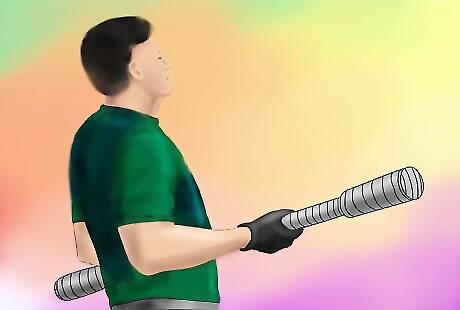
Test the final product. Try to "wiggle" or move each piece of foam attached to the pipe. Each piece should feel firmly stuck in place. If any of the pieces move, you should secure them in place with additional duct tape. If all of the pieces seem firm and in place, the pugil stick is now complete.




















Comments
0 comment